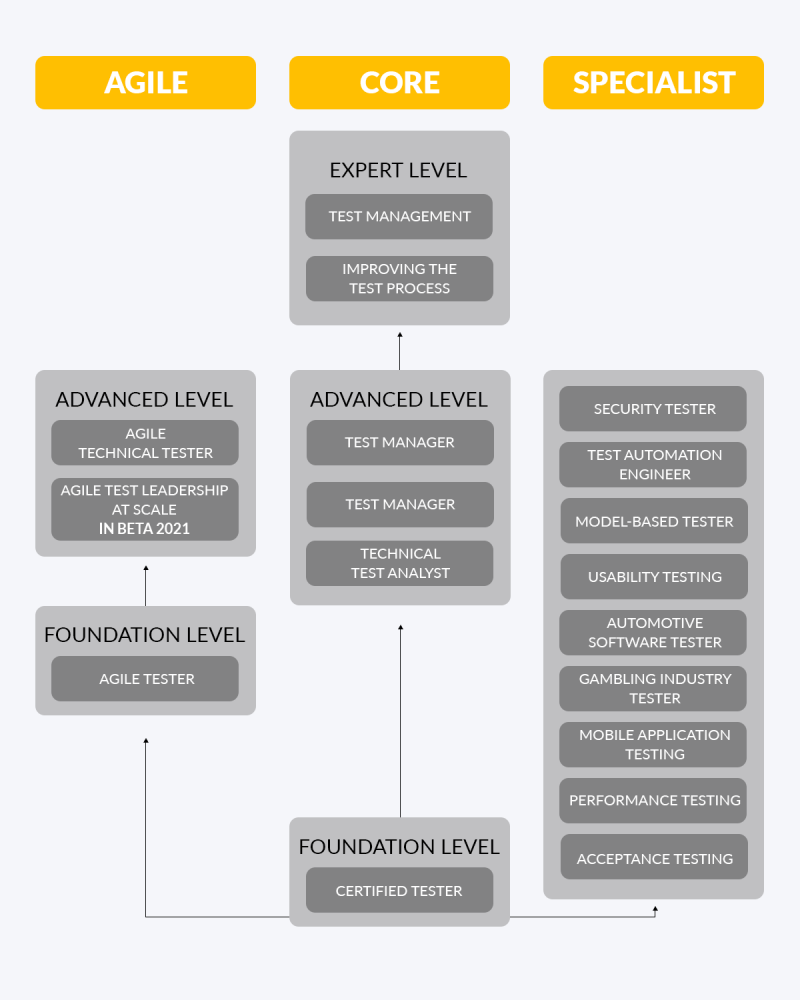Each of us has the opportunity to prove ourselves as testers, and our testing involves using, for example, utility products. After turning them on and then making sure that they perform their functions and are in line with our expectations, we can conclude that the devices are working properly. If we observe defects related to their use, we return them for complaint. Software testing is based on a similar principle.
What is software testing? – table of content:
- What is software testing?
- Software testing objectives
- What does the job of a software tester look like?
- How to become a tester?
What is software testing?
Software developed by programmers is subjected to tests that consist of checking its correct operation and compliance with the specification. This is called software verification.
Specification is a document that has all the necessary information about the software, e.g., an application, and first it contains a description of the functions it should perform. Checking if the software works according to the users’ expectations is called validation.
Testing improves software quality, limits the occurrence of failures resulting from errors, reduces financial losses, shortens the time of software development and strengthens the company’s image. Testing activities are best performed in the earliest stages of software implementation. The sooner a bug is detected, the lower the cost of fixing it. If tests are not carried out in the earliest stages of software development, complications may arise due to e.g., advanced work on the project, which may make it difficult to locate the source of the error and fix it.
Software testing objectives
According to ISTQB (International Software Testing Qualifications Board), testing objectives can be achieved by:
- Prevent defects resulting from errors by evaluating work products such as code,
- Reduce the risk of software quality deterioration by detecting failures caused by defects,
- Verification that the software meets all the requirements that were included in its documentation, validation, that is, verifying that the software aligns with user expectations,
- Building confidence in testing at every level,
- Providing information that influences stakeholders to make informed decisions,
- Compliance with laws, standards, norms and contractual requirements.
What does the job of a software tester look like?
A tester’s job is to report bugs found as a result of software exploitation. In case of finding them, he reports them to a programmer responsible for a given area or the whole software. Dedicated programs are designed for this type of reporting. The tester describes the path in which he presents step by step the way the error was detected. This allows the programmer to quickly find the bug and fix it, and then report the completed task to the tester for retesting. The tester, in turn, retraces the path by repeating the same sequence of steps. If the bug is fixed, he accepts the task, and if it is repeated, he reports it again to the programmer.
Testers are divided into manual and automated testers. As a manual tester’s job is to single-handedly test the software by assessing each test scenario containing all cases, is time-consuming. An automated tester, in turn, uses tools to write scripts and programs that speed up the the process and additionally detect errors that may go unnoticed by a manual tester. Automatic testing is, therefore, more precise, but creating tools requires knowledge of programming languages, e.g., Java, SQL or Python.

How to become a tester?
Anyone who plans to become a software tester should learn the theory of testing. The knowledge gained can then be verified by taking the ISTQB exam. This is a non-profit organization that has been operating since 2002. The exam has the form of a test, and after obtaining a positive result, the examinee receives a certificate confirming his or her competence and knowledge as a tester. The advantage of the exam is that there is no expiration date for the certification and it is recognized worldwide.
The ISTQB exam can be taken at three levels: Core, Agile, and Specialized. Core addresses the multi-faceted topic of software testing. Agile refers to agile software testing practices, and the specialist module, for example, provides information related to specific testing activities such as test automation. There are also three levels of exam difficulty: basic, advanced, and expert. Below is a diagram of the mentioned modules and their levels.

A tester plays a vital role in the proper functioning of the software, so he or she should possess qualities that will make the job easier. Accurate, patient, consistent and communicative individuals will do best in software testing. A tester should also exhibit analytical thinking skills due to the implementation of test scenarios.
Summary
Software testing is a way of detecting irregularities in software and improving its quality by meeting testing objectives. The entire process is handled by software testers who have the specific knowledge to facilitate their work and they can confirm it by e.g., obtaining the ISTQB certificate.
What is software testing? Now you know the answer! Check out our other series about Python and Javascript!
If you like our content, join our busy bees community on Facebook, Twitter, LinkedIn, Instagram, YouTube.
Author: Robert Whitney
JavaScript expert and instructor who coaches IT departments. His main goal is to up-level team productivity by teaching others how to effectively cooperate while coding.


















